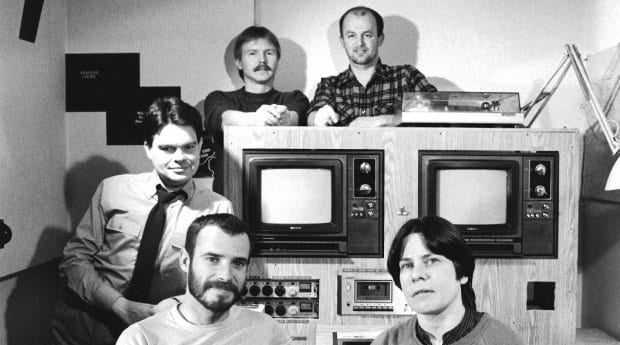A piece of Vancouver history is at risk of being lost forever if VIVO Media Arts can’t raise enough money to preserve Gayblevision, considered by many to be Canada’s first gay and lesbian television show.
The half-hour news and variety program aired on the now-defunct West End Cable 10 station from the late 1970s until the mid-1980s, after the CRTC first ordered cable companies to open up their local studios to community groups. And while we may take for granted today that we have a nationally broadcast television channel focused solely on the LGBT community, Gayblevision came at a time when homosexuality had only recently been legalized and gay rights were still in their infancy.
From footage of Vancouver’s first Pride parade to interviews with politicians, activists and prominent authors such as Jane Rule and Tennessee Williams, the Gayblevision tapes capture slices of our history well worth preserving. The tapes were donated to VIVO Media Arts by the late Mary Anne McEwen, one of the show’s original producers.
“The media was doing negative stuff on gay people, and we just wanted more positive stuff,” McEwen told Xtra in 2010, a year before she died.
Consisting of approximately 41 episodes, as well as a number of additional tapes that are thought to include civic elections and specials on the AIDS crisis, the tapes’ specific content can be revealed only through the preservation process.
“When we start working on a collection like this, we start to connect with the players that are still around and do video interviews so we can assemble a history,” says Karen Knights, VIVO’s director of development. “None of the tapes has been fully catalogued yet.”
One of those original players is Don Larventz, who worked on Gayblevision in its early years. For Larventz, who only just discovered that the tapes had survived, it is about preserving a rich history of media activism.
“We’re in danger of losing our history,” Larventz says. “We live in a time of amnesia where the ability to understand our history and compare it to the present is at risk.”
VIVO staff share his concern and add an extra note of urgency: the original videotapes are quickly deteriorating.
“These tapes are now 30 to 35 years old and are essentially at end-of-life,” Knights says. “We are pushing to digitize essential collections from the pre-’90s era before we lose them forever.”
While a number of the original Gayblevision tapes have been made available for viewing through the VIVO library, the intent is to eventually offer the entire collection online.
Preserving and digitizing the tapes is expected to cost $12,000. VIVO is accepting donations here, where you can also view three clips from the show.

 Why you can trust Xtra
Why you can trust Xtra


